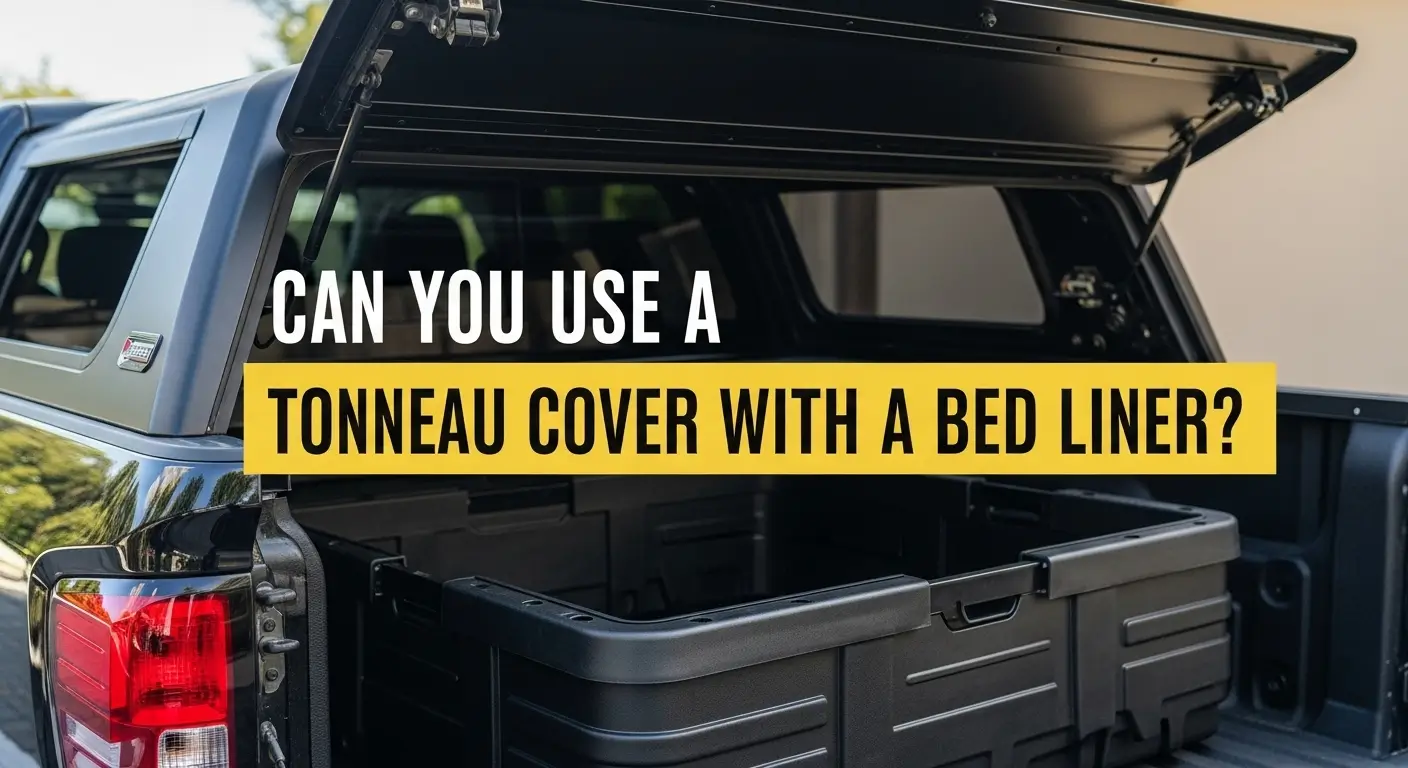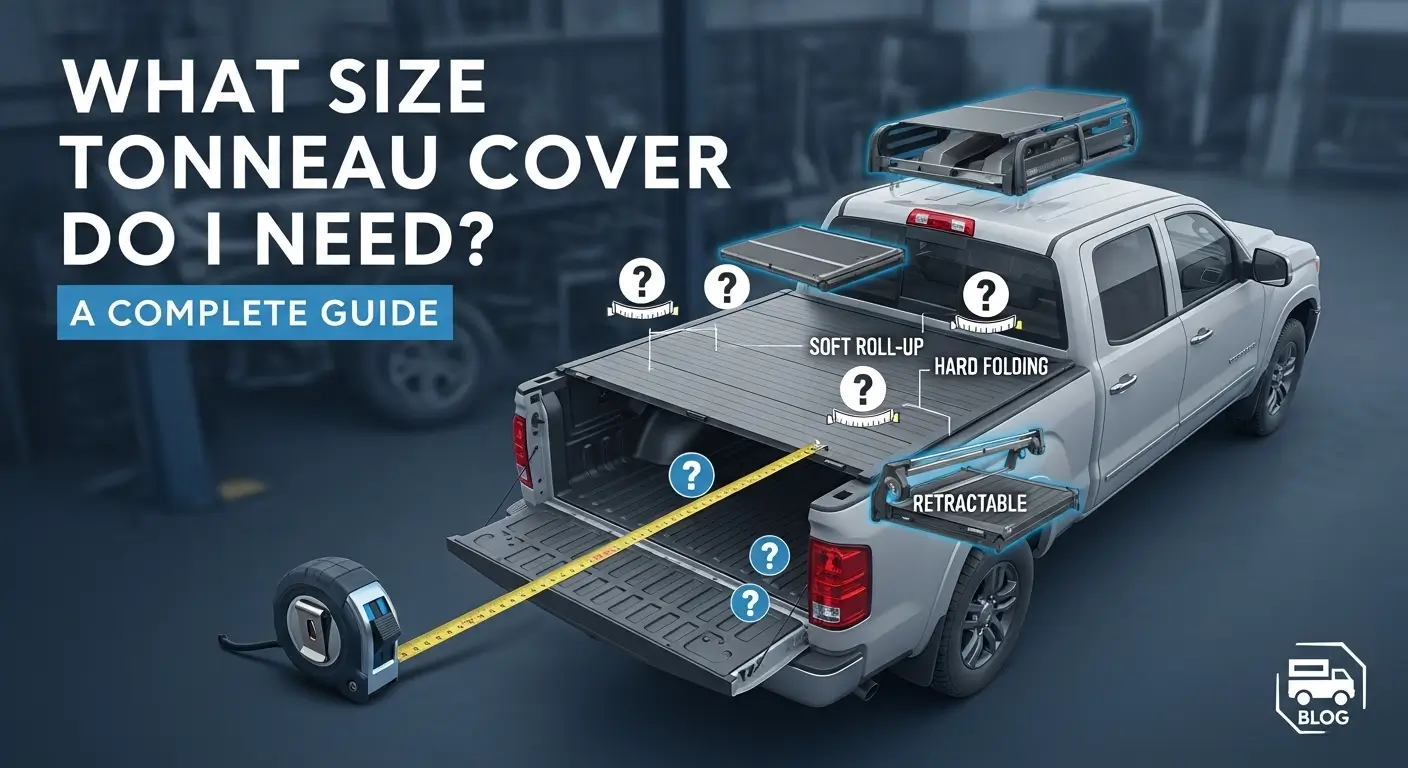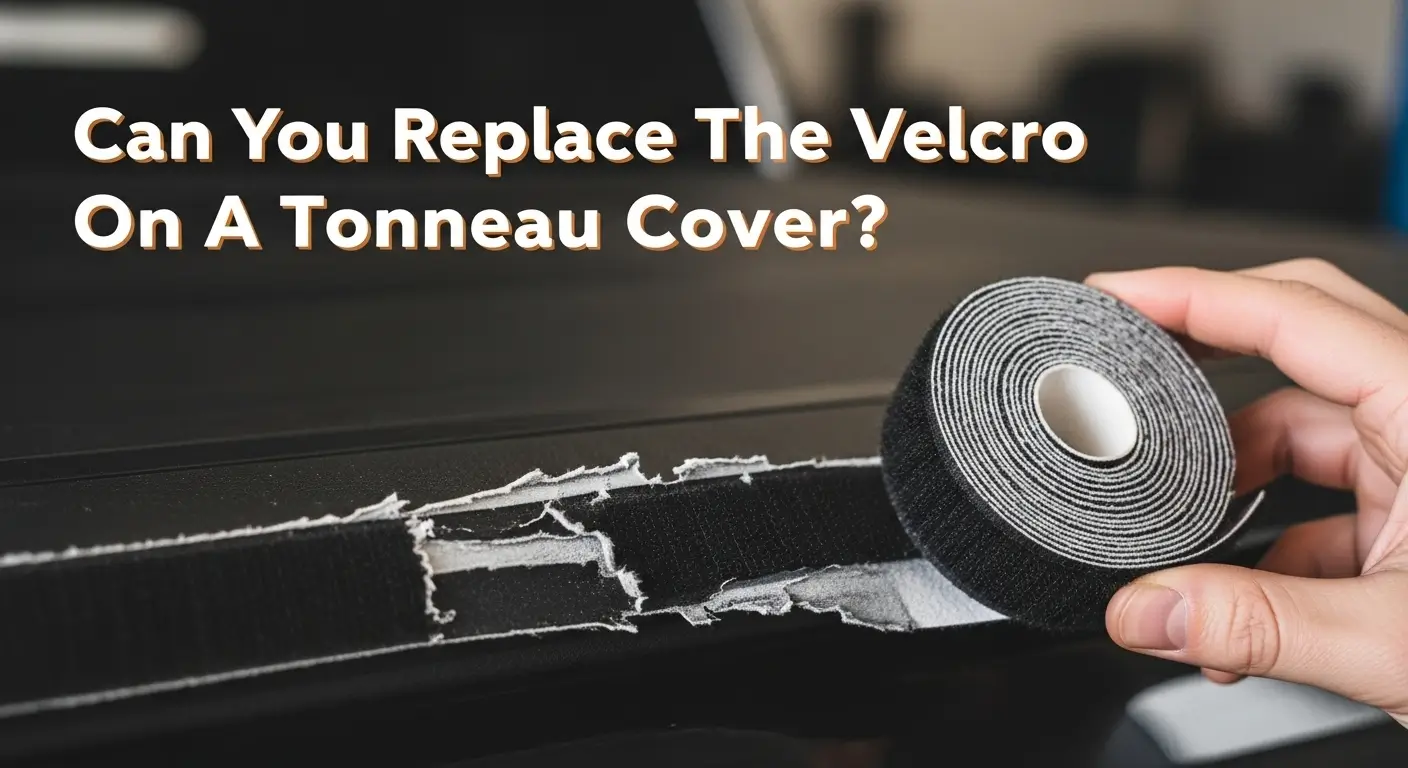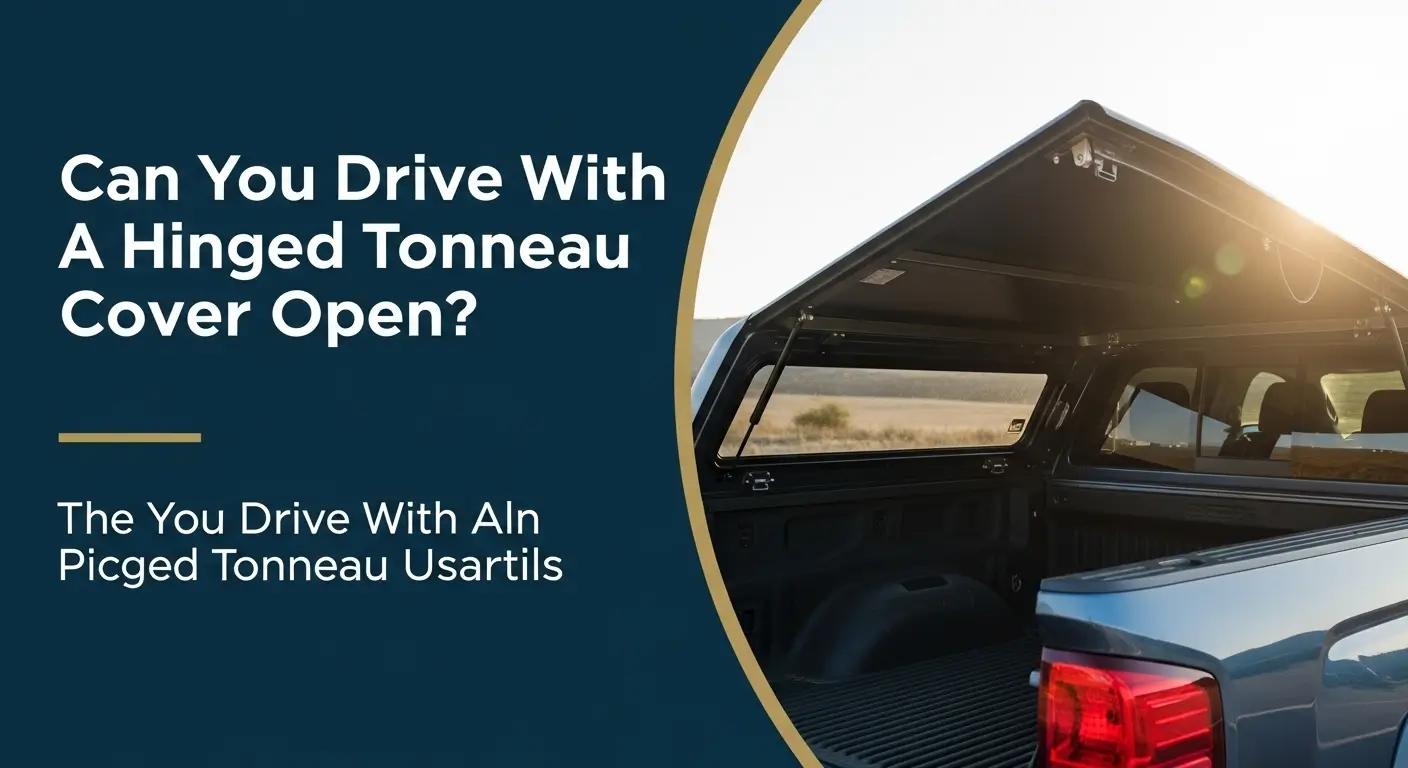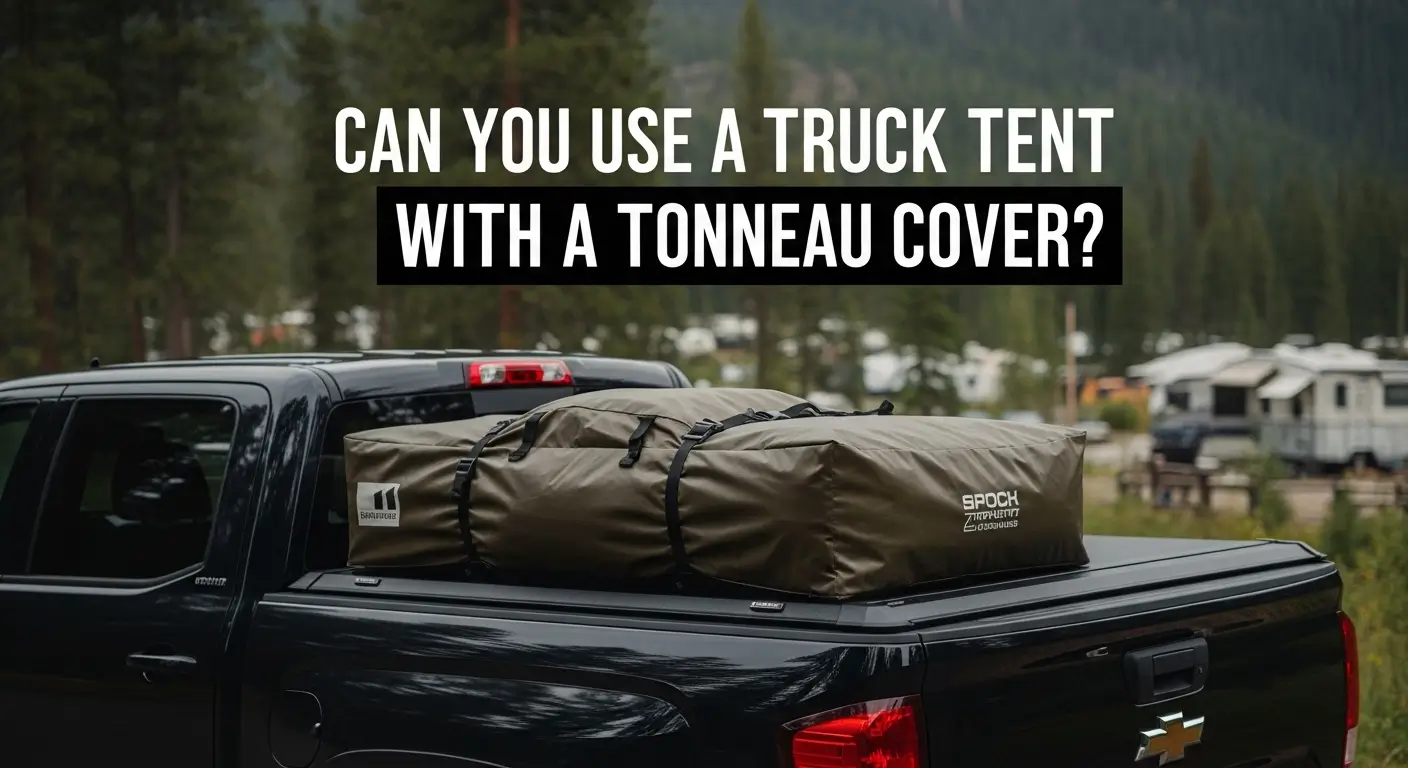Many pickup owners hope that by covering their open bed with a tonneau cover, they’ll see noticeable fuel savings.
After all, an open truck bed can act like a parachute, catching air and creating drag. In theory, smoothing that airflow should help miles per gallon (MPG).
Industry tests confirm that properly fitted covers do trim aerodynamic drag – typically by about 5% – which translates to roughly a 1-2% increase in fuel economy.
However, real-world experiments (and everyday driving conditions) complicate the story. In this comprehensive guide, we explore the aerodynamics, the data, and expert insights so you can decide if a tonneau cover is worth it for your MPG.
A pickup with a retractable tonneau cover installed. Covering the bed helps smooth out airflow, modestly reducing drag – a key factor in how a cover can affect highway fuel efficiency.
Table of Contents
Key Takeaways
- Modest MPG Gains: Aerodynamically, covers reduce drag ~5-6%, yielding about 1-2% fuel economy improvement. That’s roughly 0.3-1 MPG on most trucks. In practice, expect only tiny increases in highway MPG and almost none in city driving.
- Cover Type Matters: The lightest covers (soft roll-ups, lightweight retractables) give the best net benefit, since heavy hard covers can negate savings.
- Not a Money-Saver Alone: The fuel saved usually won’t pay for the cover. For example, saving 10-20 gallons a year (≈$30-$70) against a $1,000 cover means a very long payback.
- Consider Other Benefits: Security, weather protection, and convenience often justify a cover more than fuel economy. If you need a cover for these reasons, any MPG improvement is just icing on the cake.
- Drive Wisely: To maximize any benefit, keep the tailgate up and maintain steady highway speeds. Combine the cover with normal eco-driving habits for the best overall efficiency.
How Tonneau Covers Alter Truck Aerodynamics?
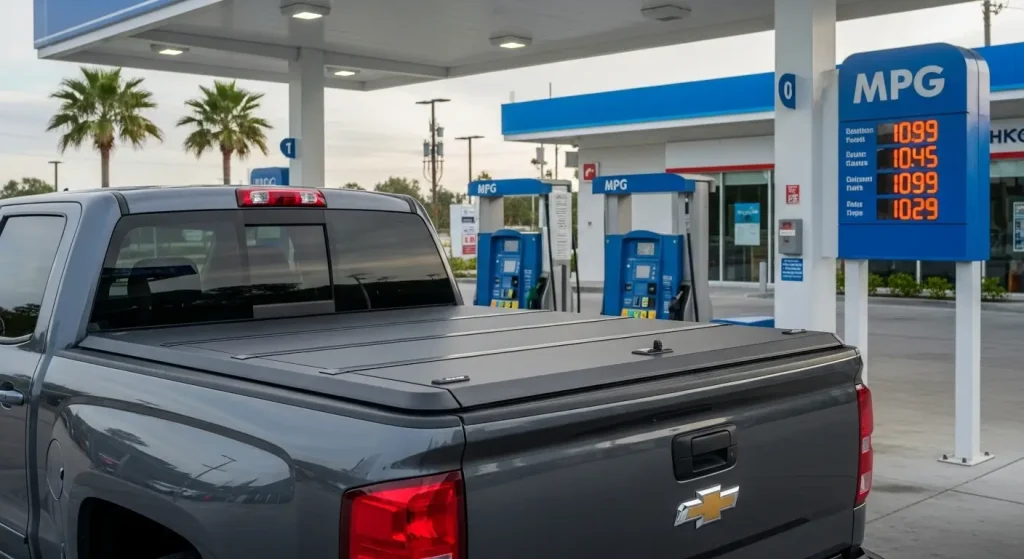
Airflow over a moving truck is turbulent by nature. With no cover, wind rushes into the open bed and tumbles around inside, creating a low-pressure “air pocket” that drags on the vehicle (and its engine).
A tonneau cover seals that pocket, forcing air to flow smoothly over the flat bed. This streamlining can reduce the coefficient of drag (Cd). In engineering terms, anything that cuts drag should improve fuel economy – even modestly.
- Drag Reduction: Wind-tunnel research consistently finds that a closed, empty truck bed (with tailgate up) creates less aerodynamic drag than an open bed. In tests, various covers – especially lightweight roll-up or folding types – trimmed drag by around 5-6% on average.
- Fuel Gain Potential: Experts note that roughly every 10% drop in drag yields about a 2-3% MPG bump at steady highway speeds. Thus, a 5% drag cut (like the SEMA wind-tunnel result) suggests only about a 1-2% MPG improvement. For a truck averaging 20 MPG, that’s just 0.2-0.4 MPG extra – small but real on the highway.
In short, a tonneau cover can improve aerodynamic efficiency. But the actual fuel benefit is generally small and only materializes under the right conditions (mainly steady highway driving). On city streets with stop-and-go traffic, any gain is usually negligible.
Also check: Do tonneau covers really improve gas mileage
Wind-Tunnel and Lab Studies on MPG
Several controlled experiments have quantified exactly how much covers help:
SEMA Wind-Tunnel Study (2007)
Perhaps the most cited research is by the Specialty Equipment Market Association (SEMA). Their tests at NASCAR’s AeroDyn tunnel found every cover they tested reduced drag on various trucks. On average, covers cut the drag coefficient by about 5.73%agricover.com.
Translating that, the study concluded it “could account for a 1.8% improvement in gas mileage.” In plain terms, a truck getting 20 MPG might see it rise to roughly 20.36 MPG with a cover.
Different cover styles varied – fiberglass hard covers also shaved drag, but their extra weight might offset gains in real driving. The SEMA report is a key data point showing covers do reduce drag.
Engineering Water-Tunnel Test (1997)
A student project at Western New England College used a water channel to simulate airflow. They observed drag reductions of nearly 12% with a cover, implying a correspondingly larger MPG gain. This suggests optimal covers and conditions could yield higher savings than the SEMA average, though this is an older lab result.
Recent Dealer/Shop Analyses
Shops selling covers also point to tests. For example, a modern review noted lightweight roll-up covers often deliver the best MPG gains, whereas heavy hardcovers can “add significant weight…negating any potential mileage improvement”.
One electronics shop cites “mechanical engineering studies” claiming up to a 5% improvement in gas mileage from drag reduction (though it’s not clear which study). This aligns with the notion that only the lightest covers come close to that upper bound.
Despite different methods, all these lab results agree: tonneau covers reduce drag. And by fluid dynamics principles, cutting drag will improve MPG in a laboratory setting. The catch: those tests often run at constant highway speeds. They don’t account for real driving variables like acceleration, hills, or cover wear.
Real-World Tests: MythBusters & Consumer Reports
Controlled tests aside, actual fuel-economy experiments have produced mixed outcomes:
MythBusters TV (2006): In a popular episode, the team tested a single truck with one soft cover, a mesh tailgate, and an open bed (at 25 and 55 MPH). They concluded that fuel economy was “about the same” whether using the cover or an empty bed with tailgate up.
Interestingly, the mesh tailgate slightly improved mileage, and an open bed (tailgate down) was the worst. However, MythBusters used only one truck and cover, so it’s a narrow case.
Consumer Reports (2013): CR tested a 2013 Dodge Ram 1500 with a V8 engine. On a fixed speed route (65 mph), adding a soft tonneau cover reduced MPG by nearly 1 MPG.
In other words, their single-truck test showed cover+tailgate up was a hair worse than no cover, tailgate up. (They also confirmed an open or down tailgate hurt mileage.) CR cautioned this was a limited test – it used one truck and one cover – but it suggested that in everyday terms, a cover might not always save fuel.
Community and Forum Claims: Many truck owners share personal tests. For example, some Maverick owners reported roughly a 7-8% increase in MPG (e.g. +2 MPG on a 20-22 MPG truck) by adding a cover.
Others find almost no change or even slight losses. Anecdotes vary widely because individual driving style, speed, terrain, and truck model all play big roles.
The takeaway from real-world checks: The average fuel benefit is very modest – often within the margin of error for normal driving.
One analysis puts it bluntly: “don’t buy a tonneau if your main reason is better mpg; any real improvement will take many years to offset the price of the cover”.
Tonneau Cover Types and Their Fuel Impact
Not all bed covers are created equal. The design and weight of the cover can significantly influence MPG:
Soft Roll-Up / Soft Folding Covers
These vinyl or fabric covers are lightweight. They lie flat when stretched across the bed and have minimal added mass.
Pros: They offer nearly all the aerodynamic benefit (smoothing the air) without much weight penalty. Experts say these are “the best choice if fuel economy is a concern”.In wind tests, soft roll-ups often matched the drag reduction of hard covers. So if MPG gain is your goal, a low-profile soft cover is typically optimal.
Hard Rigid Covers
Hardcovers (aluminum panels, fiberglass) look robust and secure.
Cons: They tend to be heavier. Extra weight can offset any aerodynamic gain. A steel or thick fiberglass cover might improve airflow but then add hundreds of pounds, which means the engine works harder accelerating. RealTruck’s analysis specifically warns that heavy covers “negate any potential mileage improvement”.
In practice, if a hard cover is light or a sectional design (like some tri-folds), you might get a small net benefit. But a heavy one-piece lid could easily cause lower MPG.
Retractable Covers
Retractable aluminum covers (like the RetraxPRO) combine hard-material benefit with the convenience of rolling up. They can be moderately heavy, but because they roll compactly, they can still reduce drag well. TAS Electronics notes retractables “can improve your gas mileage by up to 5%” under ideal circumstances.
In reality, their weight is often lower than a full hard cap, and they seal well, so they’re usually better for MPG than bulky fiberglass caps – though still not as light as vinyl.
Other Styles (Rolls, Tri-Folds, Hard Lids):
Each style has trade-offs. For example, a three-panel hard-fold cover may sit higher than a smooth roll-up, catching more wind. Conversely, some hard-lids are near flush with the bed. As a rule: lighter = better for MPG. If fuel economy is a top priority, focus on soft covers or the lightest hard cover you trust.
Driving Conditions & Practical Considerations
Even with the right cover, when you drive and how you drive matter more than the cover itself:
Highway vs. City Driving
The aerodynamic advantage shows up at speed. Most studies (wind tunnels, CR tests) focus on highway speeds (~55-65 MPH). On the highway, a smoother airflow means the engine doesn’t fight as much drag, so you gain that ~1-2% MPG.
In stop-and-go city traffic, drag from wind is a tiny part of fuel use – accelerating and idling dominate. Thus, if you mostly drive around town, a cover’s MPG impact is virtually zero.
Speed and Tailgate
Interestingly, even with no cover, having the tailgate closed is generally best for MPG. Consumer Reports found a closed tailgate (no cover) gave better economy than an open one.
Some people debate if an open tailgate might smooth the flow, but current evidence is that a tight cover + up tailgate is more aerodynamic than folding it down.
Weather and Cargo
Note that in cold weather, a cover might slightly help the engine warm up by reducing airflow in the engine bay (some diesel trucks install block heaters).
Also, a cover keeps cargo from hitting the wind. If you’re hauling bulky gear, a cover can allow you to carry it more aerodynamically – indirectly helping MPG. But if the bed is packed high anyway, the cover’s effect could be moot.
Weight and Accessories
Sometimes the tailgate doesn’t close with a full toolbox or extra tires, so drivers rely on covers to contain gear. Adding a tonneau for that reason may slightly improve MPG by smoothing the rear profile versus a stack of items. But anything heavy adds weight. It’s a balance.
How Much Will You Really Save?
It helps to do a quick math check. Suppose your truck averages 20 MPG and you drive 15,000 miles per year. That’s 750 gallons used. If a tonneau cover gives a 2% MPG boost, you’d gain 0.4 MPG (20 → 20.4 MPG). Over 15,000 miles, that’s about 20 fewer gallons burned (750 → 730).
- Fuel Cost Savings: At $3.50 per gallon, 20 gallons is $70 saved per year. If gas were $4.00, that’s $80/year. Hardly life-changing. And many covers cost $800-$1,500 installed. Even at $1,000, it would take over a decade of fuel savings to break even on cost – and by then the cover’s cladding or hardware might need replacement!
- Realistic Expectation: Most reviewers and guides caution that MPG gains are “modest”. You should view any fuel savings as a bonus, not the main reason for a cover. In fact, Linex (a truck accessory retailer) flatly says: “Yes, tonneau covers can improve… but savings will be modest and vary.
Rather than chasing a few MPG, many customers buy covers for cargo protection, security, and style, with MPG as a secondary perk. Those benefits – theft deterrence, weatherproofing, and convenience – usually pay off faster than fuel savings. But if fuel economy improvement is part of your goal, here are some tips:
- Choose a Lightweight Cover: Soft vinyl or a simple roll-up is cheapest and lightest. You’ll get nearly the full drag-reduction effect without excess weight.
- Keep the Tailgate Up: Always leave the tailgate closed when driving. An open tailgate hurts fuel economy more than no cover.
- Maintain the Cover: A sagging or unfastened cover can flap in the wind and lose its benefit. Make sure it’s taut and sealed when driving.
- Drive Efficiently: Combine the cover with basic fuel-saving habits (proper tire pressure, gentle acceleration). The cover’s small MPG gain stacks on any other improvements.
Conclusion and Recommendations
So, does a tonneau cover improve MPG?
The answer is yes, but only slightly. Technical studies and wind-tunnel data confirm that covering the bed smooths airflow and can raise fuel efficiency by a small margin. However, on-the-road tests have shown that the real-world effect is often negligible – sometimes even slightly negative if the cover is heavy.
For everyday consumers, the bottom line is: don’t expect a tonneau cover to dramatically save gas. If your priority is fuel economy, focus on driving habits (speed control, maintenance, etc.) first.
If you decide on a cover for other benefits (cargo security, neat appearance, keeping gear dry), go ahead and enjoy the small MPG bump as a bonus. Just pick a light-style cover, install it properly, and you’ll have a slick-looking truck that may a) protect your stuff and b) save you a few dollars at the pump over time.
In any case, always verify fuel economy gains with your own driving pattern. Consider joining truck owner communities or forums to see real user reports for your specific model – anecdotal results can vary. With a clear expectation that MPG gains are modest, you’ll be better equipped to weigh a tonneau cover’s true value.
Ready to upgrade your pickup?
If protection and a touch of efficiency appeal to you, research the various covers (soft vs. hard, rolling vs. retractable) and choose one that fits your needs.
Check our guide on Choosing the Best Tonneau Cover Brands for tips on models and installation. Drive safely, keep cruising efficiently, and enjoy the added utility of a covered truck bed – every little improvement adds up.

